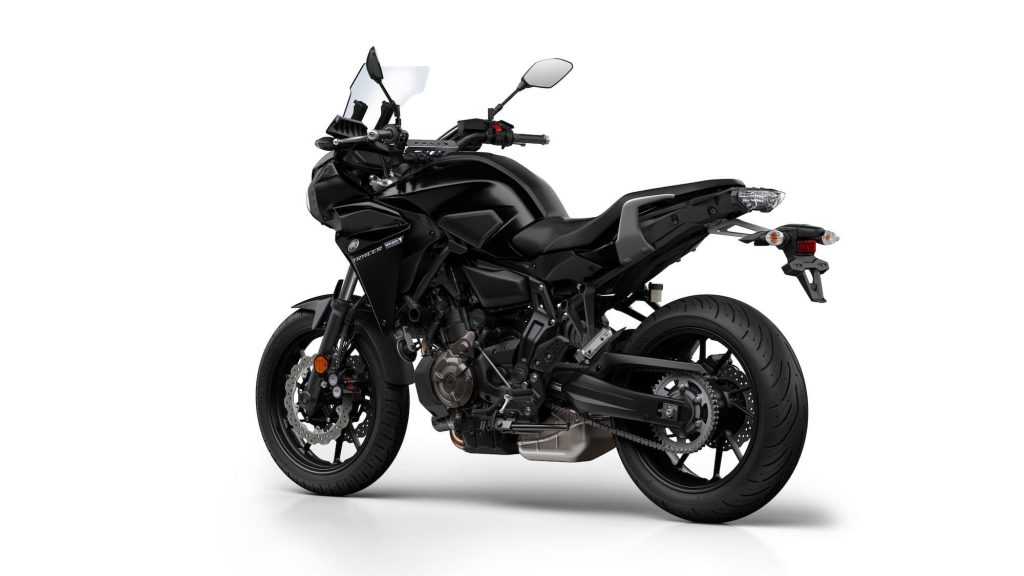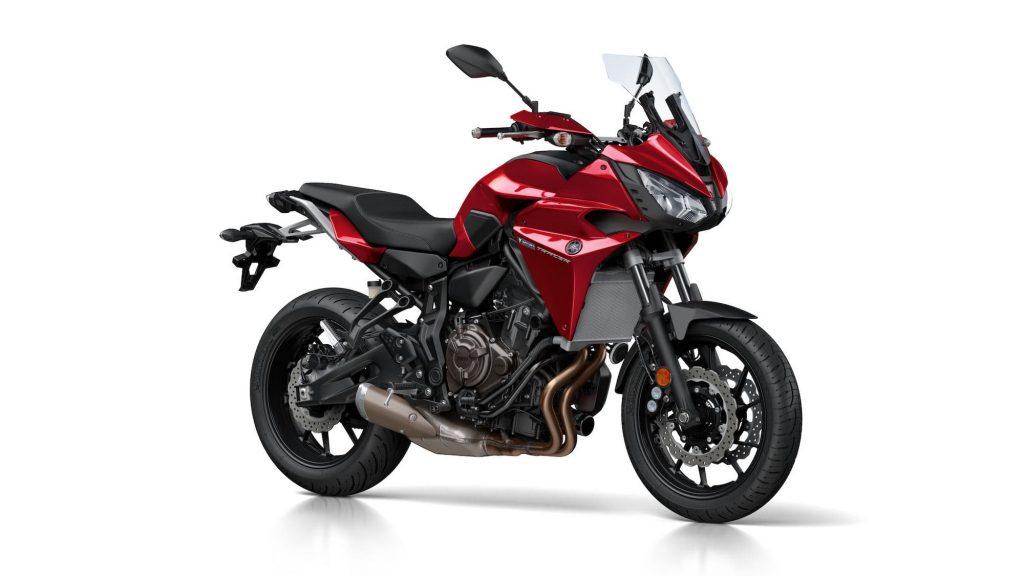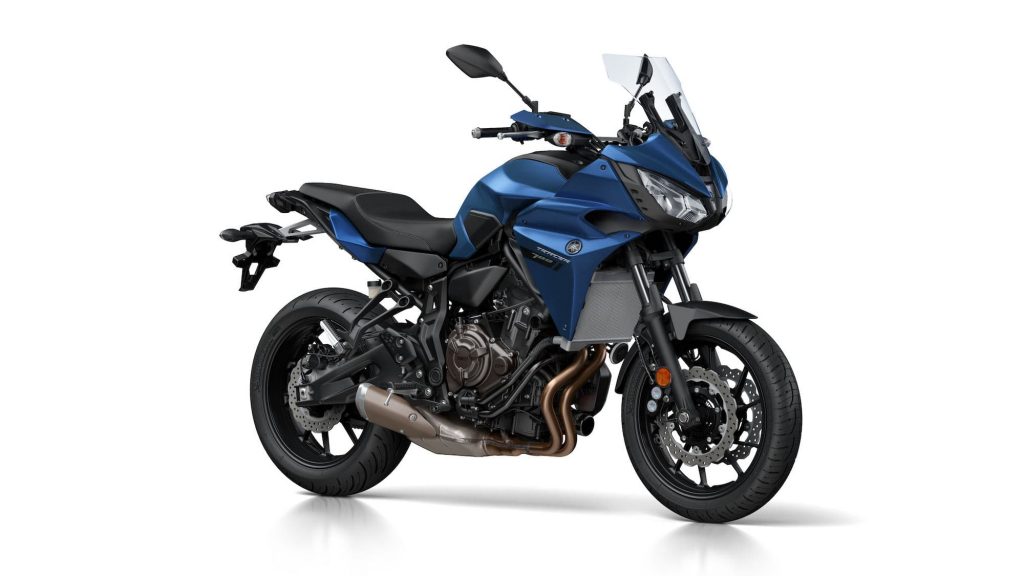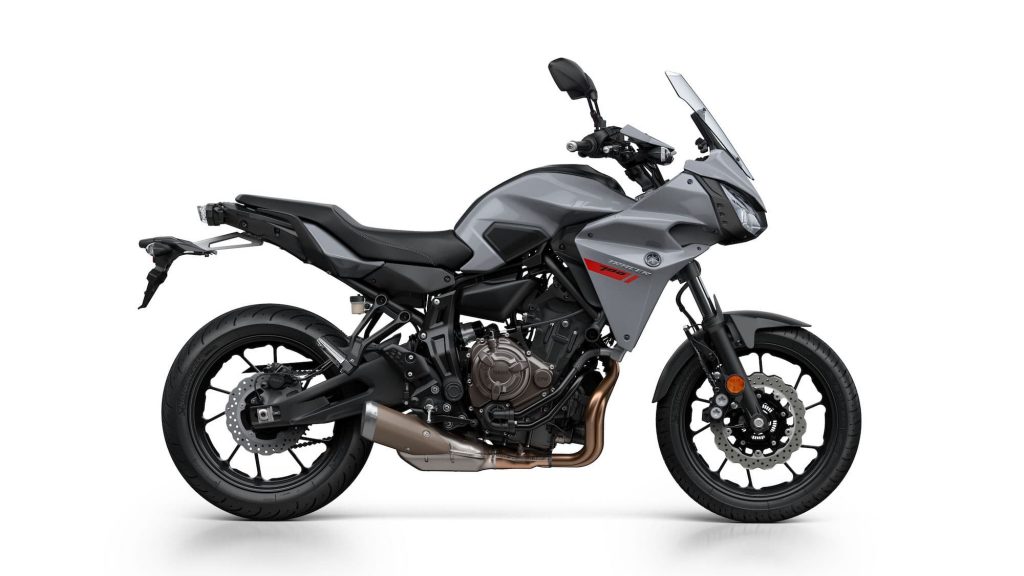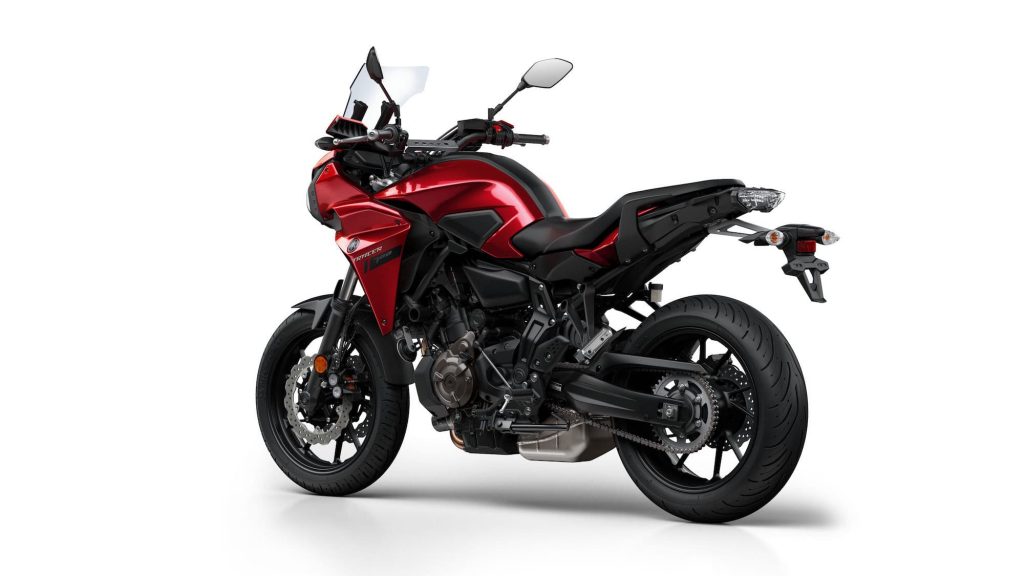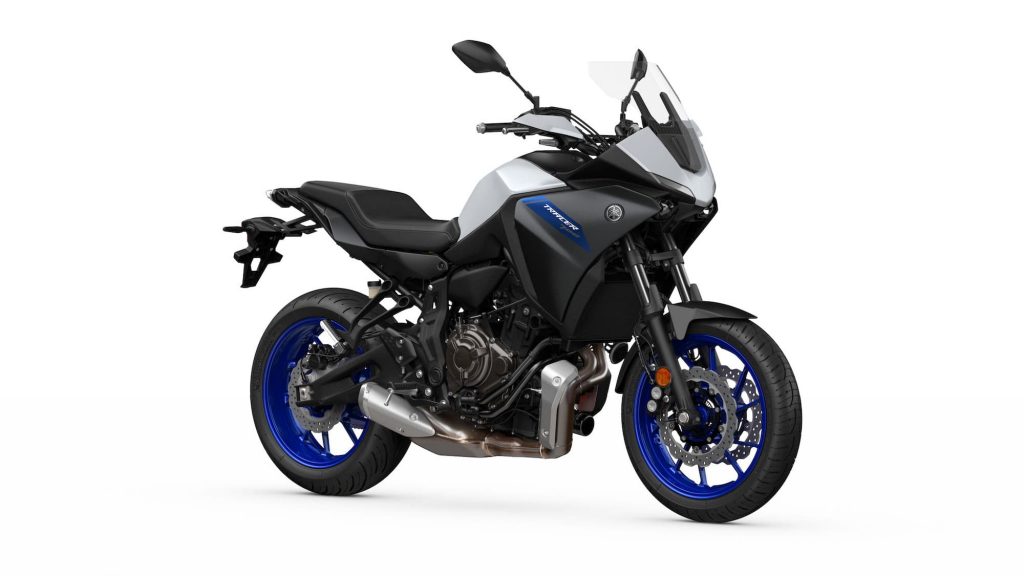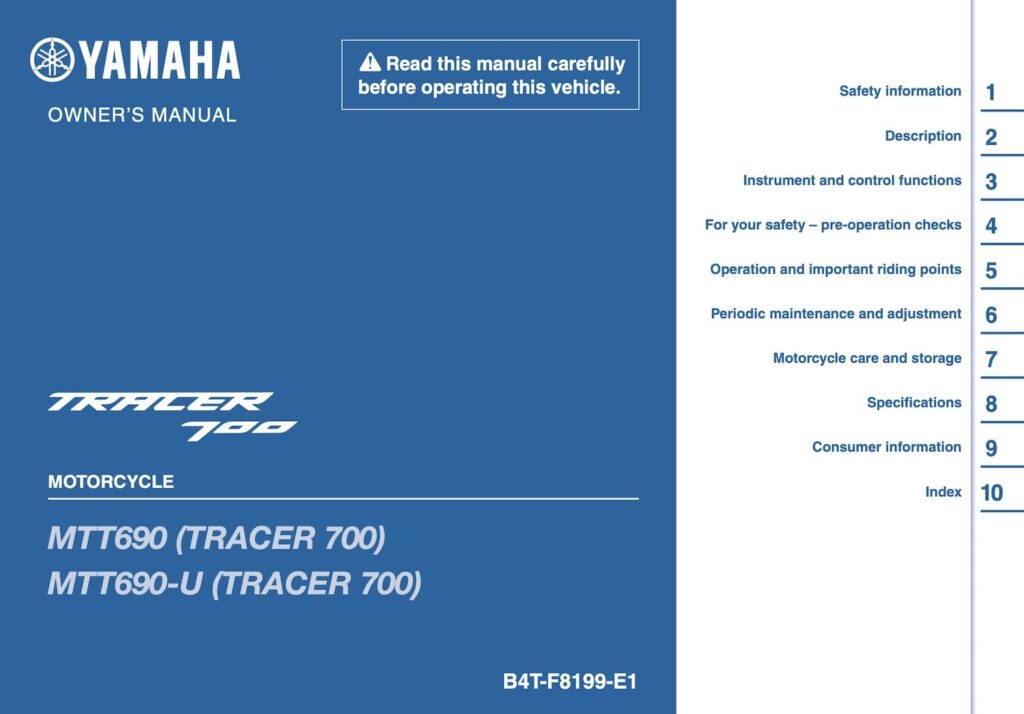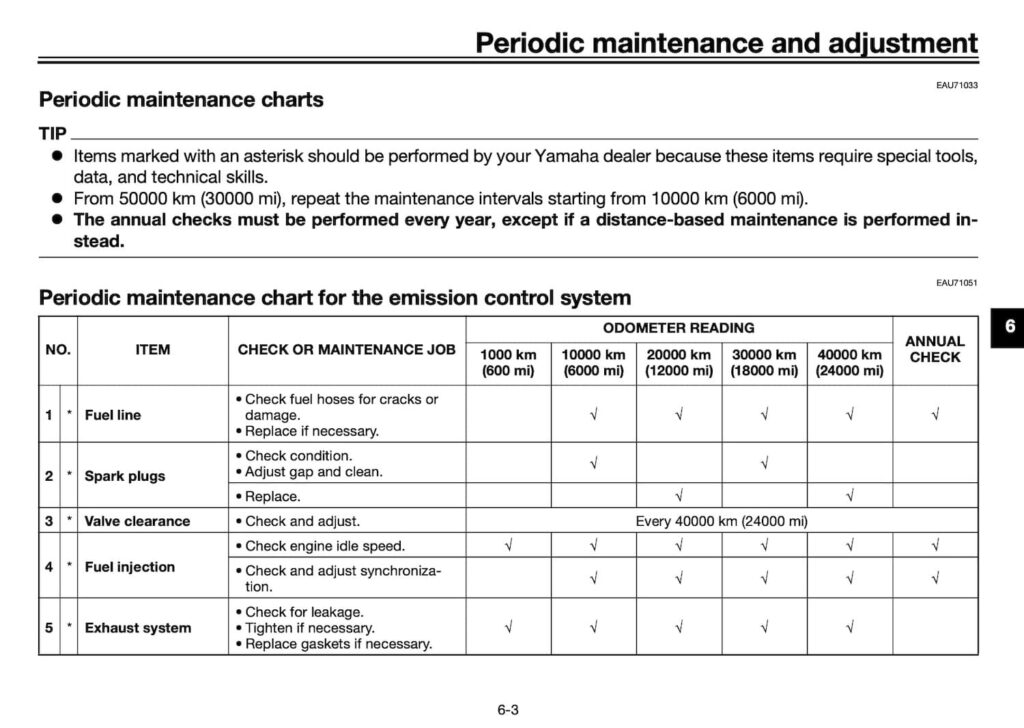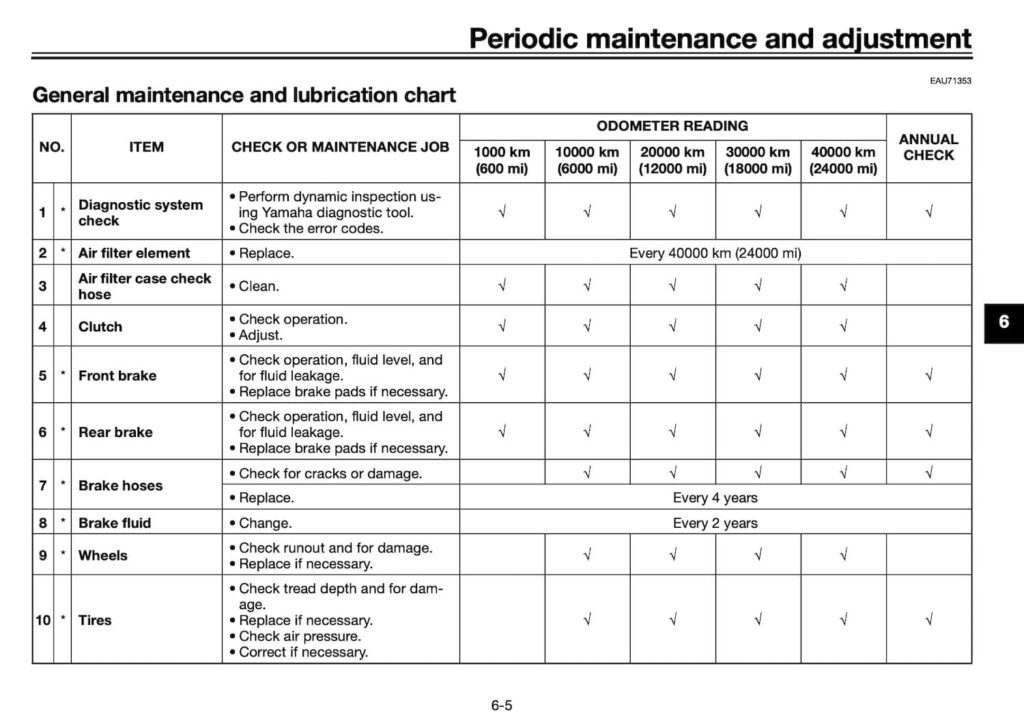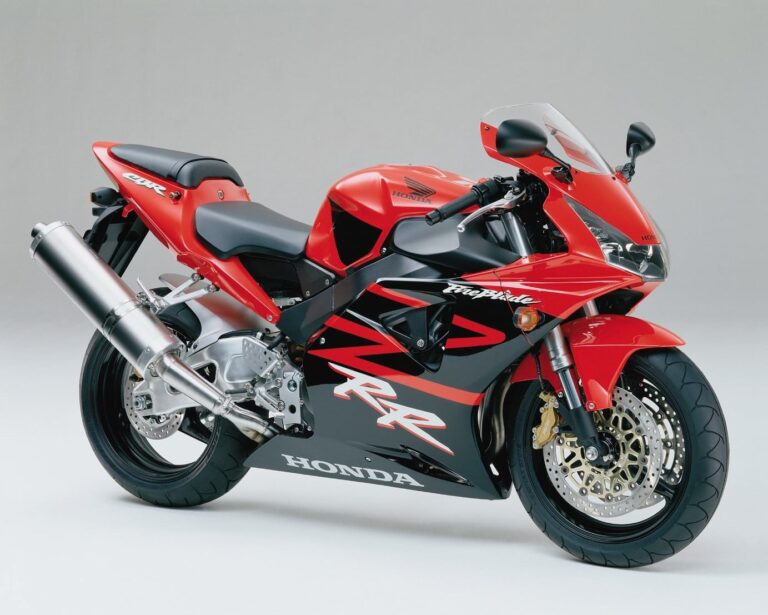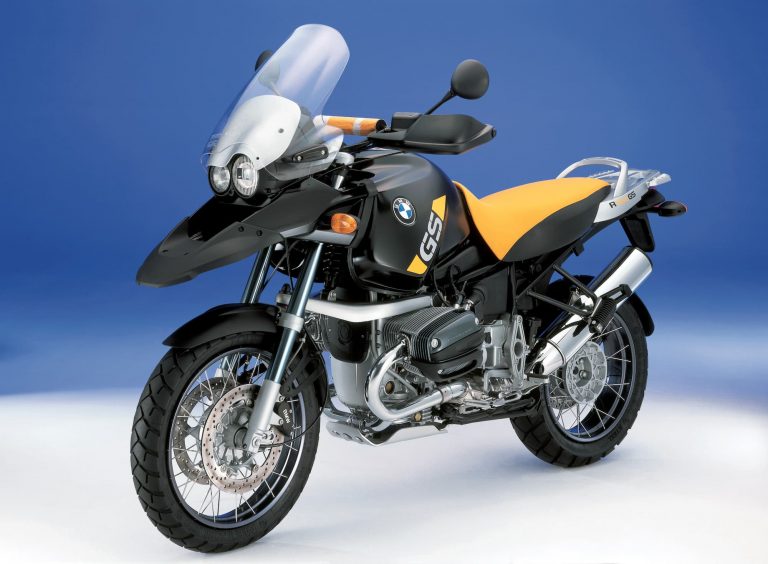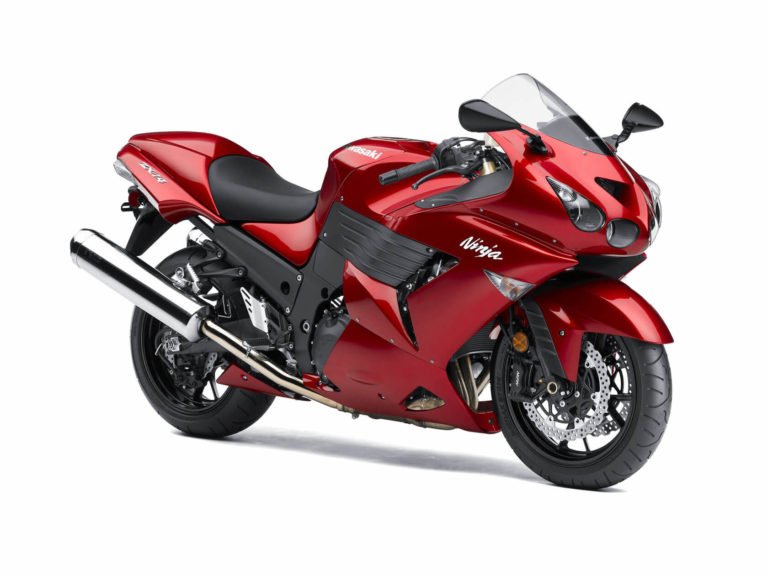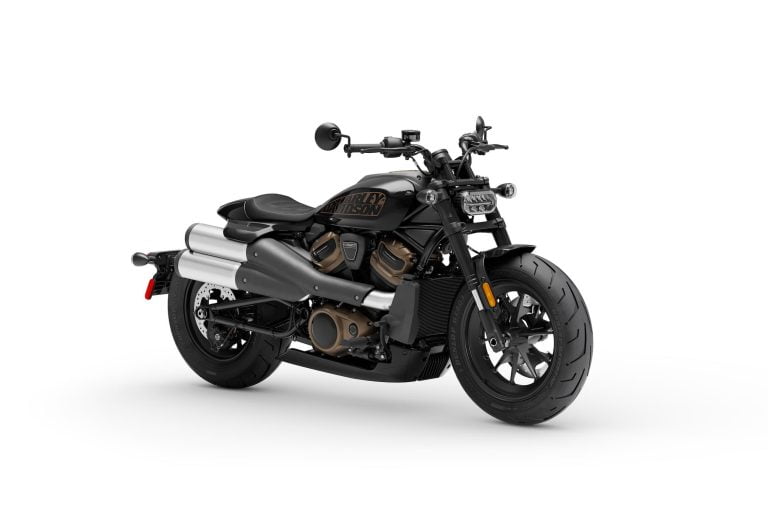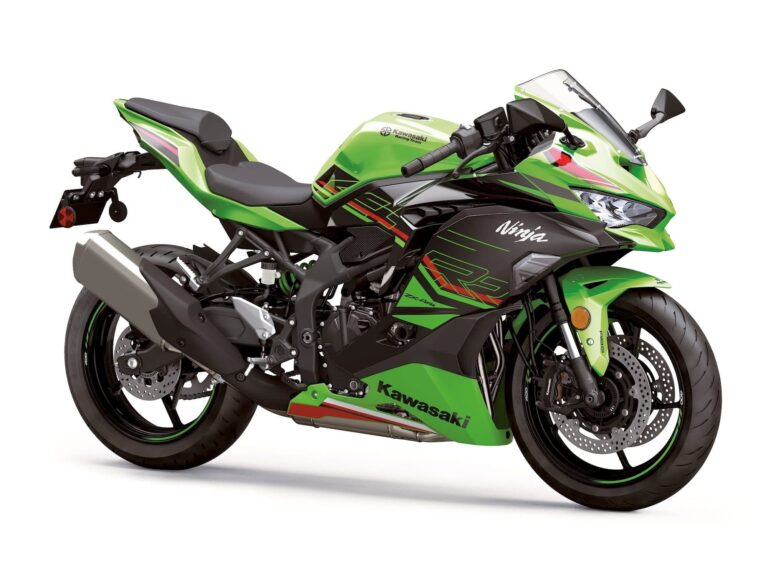Yamaha Tracer 700 (2016-2020) Maintenance Schedule and Service Intervals
This is the maintenance schedule and associated service intervals for the Yamaha Tracer 700, Yamaha’s middleweight adventure sport bike that’s very popular in Europe and the Asia/Pacific region.
The core of the Tracer 700 is the CP2 engine found in a number of other Yamaha middleweights, like the MT-07 notably. It’s a 689-cc liquid-cooled parallel twin with a 270-degree crankshaft. It has quite a bark to it for a middleweight motor! Peak power is 55 kW (74 bhp) at 9000 rpm, and peak torque is 68 Nm (50 lb-ft) at 6500 rpm.
Here are all the motorcycles that share the same CP2 engine:
- Yamaha MT-07 (formerly the FZ-07) — the naked roadster
- Yamaha Ténéré 700 — the adventure bike
- Yamaha XSR700 — the “retro” roadster
- Yamaha YZF-R7 — the sport bike
- Yamaha Tracer 700 — the sport touring bike (Europe/APAC only). Yamaha Tracer 7 from 2021 onward.
The maintenance schedule for the Tracer 700 is identical to that for restricted, lower-capacity version (Tracer 700 LAMS with a 655-cc engine) which was sold in markets like Australia and New Zealand (under the LAMS scheme), or A2 (reduced power, but full engine size) versions of the same bike under the European learner scheme.
In 2020, Yamaha redesigned the Tracer 700, re-releasing it with a new design and some new parts as the Yamaha Tracer 7 for model year 2021.
This site has links for things like oil and spark plugs from which we earn a commission (which unfortunately nobody can save, not even us). If you appreciate this work, then please use those links. Thanks!
Yamaha Tracer 700 Service Intervals
Overall, minor service intervals between oil changes for the Yamaha Tracer 700 are every 10000 km / 6000 miles or 12 months.
In the US, Yamaha motorcycles have lower service intervals. But the Tracer 700 was never available in the US.
At every service, change the oil, and either check or replace the spark plugs, and do a host of checks (see below for the regular service checklist).
The major service (valve clearance inspection) for the Tracer 700 is every 40000 km. The first valve inspection is the most important, as it’s the time when valve clearances most likely need to be adjusted.
Also be sure to regularly refresh your coolant and brake fluid, even if the bike has not received much use between services.
What you need to service the Yamaha Tracer 700 — Consumables and Special Tools
If you’re servicing your own Yamaha Tracer 700, you’ll need the following specific consumables recommended by the manual.
| Part | Yamaha Tracer 700 spec |
|---|---|
| Oil | Yamalube 10W-40. The manual suggests Yamalube of this grade, and it’s affordable on Amazon with a solid 5-star rating. Other 10W-40 lubricants should do fine, as long as they meet JASO standard MA. |
| Oil filter | Change the filter every second oil change. Either get a stock one (part 5GH-13440-50-00, used for many Yamaha products) or the Hiflofiltro HF204RC. Torque for the oil filter is 17 Nm/13 lb-ft. |
| Chain maintenance | Use either Motul chain paste (very well-liked), or a complete Motul chain care kit which includes a brush etc. |
| Engine coolant | Yamaha recommends Yamalube coolant, but use any coolant that’s a 50/50 ethylene glycol pre-mix. You can either use pre-mix or concentrate (for which you’d need demineralised water). |
| Cable lubricants | Keep your cables lubed! Protect all cable life is a good generic lubricant. |
| Spark Plugs | NGK LMAR8A-9. This is what the manual suggests. Make sure it’s gapped correctly to 0.8-0.9mm (get a gapping tool) and torqued 13Nm. |
| Air filter | Yamaha part number for the OEM air filter is 1WS-14450-00-00. You can also get the K&N equivalent, YA-6814. |
| Brake pads | People regularly replace OEM units with EBC double hardened brake pads for extra life and better brake feel (and less fade). You need two sets for the front (FA252HH) and rear (FA174HH). |
| Grease | Use a good lithium soap-based grease and silicone grease for external pivot points. |
Yamaha Tracer 700 Maintenance Schedule
Below is the maintenance schedule for the Yamaha Tracer 700. This comes from the European manual as the Tracer 700 was never sold in the US.
The content is the same as in the manuals, though we’ve presented in an easier-to-read way, using our experience in motorcycle maintenance to re-prioritise certain items. For example, items like “change the engine oil” are moved to the top rather than buried down below, and maintenance related to emissions is combined with general maintenance.
Yamaha recommends that for everything other than lubing the chain, changing the oil, and greasing external parts, you should have a Yamaha mechanic perform the service.
General notes on the maintenance schedule for the Yamaha Tracer 700:
- After the final service on the chart, keep going, following the pattern shown (every 1-4 services)
- Some items (e.g. valve clearance check) have a distance interval only.
- Air filter: Don’t clean this with compressed air, as you might damage it (and then damage the engine with bits of filter).
- Items marked [D] need specialist dealer tools.
- The break-in schedule is not shown as this bike has been superseded.
| ‘000 km | 10 | 20 | 30 | 40 | Every |
|---|---|---|---|---|---|
| Perform inspection checklist (see below) | ✓ | ✓ | ✓ | ✓ | Year |
| Change engine oil (Yamalube 10W-40) while engine is warm. | ✓ | ✓ | ✓ | ✓ | Year |
| Replace oil filter (HF204RC) | ✓ | ✓ | |||
| Check spark plug condition. Adjust gap and clean. | ✓ | ✓ | |||
| Replace spark plugs (NGK LMAR8A-9) | ✓ | ✓ | |||
| Check and adjust valve clearance. | ✓ | 40000 km | |||
| Clean air filter check hose | ✓ | ✓ | ✓ | ✓ | |
| Replace air filter (K&N YA-6814) | ✓ | 40000 km, or more often if riding in dusty conditions | |||
| Replace brake hoses | 4 years | ||||
| Change brake fluid (Castrol DOT 4) and rubber parts of brake master cylinders and calipers. | 2 years | ||||
| Lubricate swingarm pivot bearing with lithium soap-based grease | 50000 km | ||||
| Check steering bearing assemblies for looseness. | ✓ | ✓ | |||
| Moderately repack steering bearings with lithium soap-based grease | ✓ | ✓ | |||
| Change coolant (ethylene glycol pre-mix) | 3 years |
Standard inspection checklist
Below is the checklist of items to do at every service per the schedule above.
The items required at break-in service are marked with a check mark in the right-most column.
| Yamaha Tracer 700 Standard Inspection Checklist | At break in? |
|---|---|
| [D] Perform dynamic inspection using Yamaha diagnostic tool. Check the error codes. | ✓ |
| Check throttle grip operation and free play, and adjust if necessary. | ✓ |
| Lubricate throttle cable and grip housing (Protect All Cable Life). | ✓ |
| Check clutch operation. Adjust or replace cable. | ✓ |
| Lubricate moving parts and cables thoroughly (lithium soap-based grease, Protect All Cable Life). | ✓ |
| Check lights, signals, and switches operation. | ✓ |
| Check sidestand switch operation and replace if necessary. | ✓ |
| Check brake switch operation, front and rear. | ✓ |
| Check / adjust headlight beam (if necessary) | ✓ |
| Check and adjust fuel injection synchronization. | ✓ |
| Check fuel hoses for cracks or damage. Replace if necessary. | |
| Check brake hoses for cracks or damage, and for correct routing and clamping. | |
| Check cooling system hoses for cracks or damage. Replace if necessary. | |
| Check engine idle speed | |
| Check front brake operation, fluid level, and for fluid leakage. Replace brake pads if necessary (EBC FA252HH x 2). | ✓ |
| Check rear brake operation, fluid level, and for fluid leakage. Replace brake pads if necessary (EBC FA174HH). | ✓ |
| Check tyre tread depth and for damage. Replace if necessary (see spec below). | |
| Check and adjust tyre pressure as necessary. | |
| Check front fork operation and for oil leakage. Rebuild/ replace if necessary. | |
| Check shock absorber operation and for oil leakage. Replace if necessary. | |
| Check wheel bearings for smooth operation, looseness, or damage. Replace if necessary. | |
| Check swingarm pivot bearing operation and for excessive play. | |
| Lubricate rear suspension link pivots with lithium soap-based grease lightly | |
| Check all chassis fitting and fasteners, and tighten/replace as necessary | |
| Lubricate brake lever pivot shaft with silicone grease lightly. | |
| Lubricate brake pedal, clutch lever, and shift pedal pivot shafts with lithium soap-based grease lightly | |
| Check sidestand pivot operation. Lubricate with lithium soap-based grease lightly. | |
| Check crankcase breather hose for cracks or damage. Replace if necessary | |
| Check exhaust system for leakage. Tighten and/or replace gaskets as necessary. |
Maintaining the Chain of the Yamaha Tracer 700
It’s important to maintain your chain on the Tracer 700, as on any chain-driven motorcycle, but particularly on an all-weather bike like the Tracer that you’ll likely use for commuting in the rain, dirt, etc.
Use a good-quality chain lubricant like Motul chain paste, or a Motul chain care kit which comes with a couple of handy tools to maintain the chain.
Yamaha recommends you follow the following chain maintenance schedule every 1000 km and after washing the motorcycle, riding in the rain, or riding in wet areas.
| Chain maintenance item |
|---|
| Check drive chain lubrication condition, lubricating if necessary (Motul chain paste) |
| Check drive chain slack, alignment, and condition, adjusting / replacing if necessary |
To measure the chain slack on the Yamaha Tracer 700, find the middle of the chain between the two sprockets. Push down on it, and measure the distance between the drive chain guide and the centre of the pins. The chain slack measurement on the Tracer 700 should be 30-35 mm.
If the chain slack is out, you should adjust it using the following guidelines.

- Loosen the rear axle.
- Loosen the lock nuts for the chain adjuster nuts.
- Adjust the chain adjusters to get to the right slack. Keep checking the slack as you make adjustments. NOTE: Use the reference markers to make sure that you’re keeping the chain aligned, i.e. that you’re turning the adjusting nuts to the same degree.
- Tighten the axle nut to 150 Nm / 108 lb-ft
- Tighten the lock nuts to 16 Nm / 12 lb-ft.
Yamaha Tracer 700 Tire size and pressures
The following are tire sizes and tire pressures for the Yamaha Tracer 700.
| Wheel | Tire Size | Tire Pressure (cold) |
|---|---|---|
| Front | 120/70-17 M/C (58W) | 2.5 bar / 250 kPa / 36 psi |
| Rear | 180/55-17 M/C (75W) | 2.9 bar / 290 kPa / 42 psi |
Stock, the Tracer 700 ships with Michelin Pilot Road 4 tires, but you can of course fit any street or sport tires to it.
About the Yamaha Tracer 700
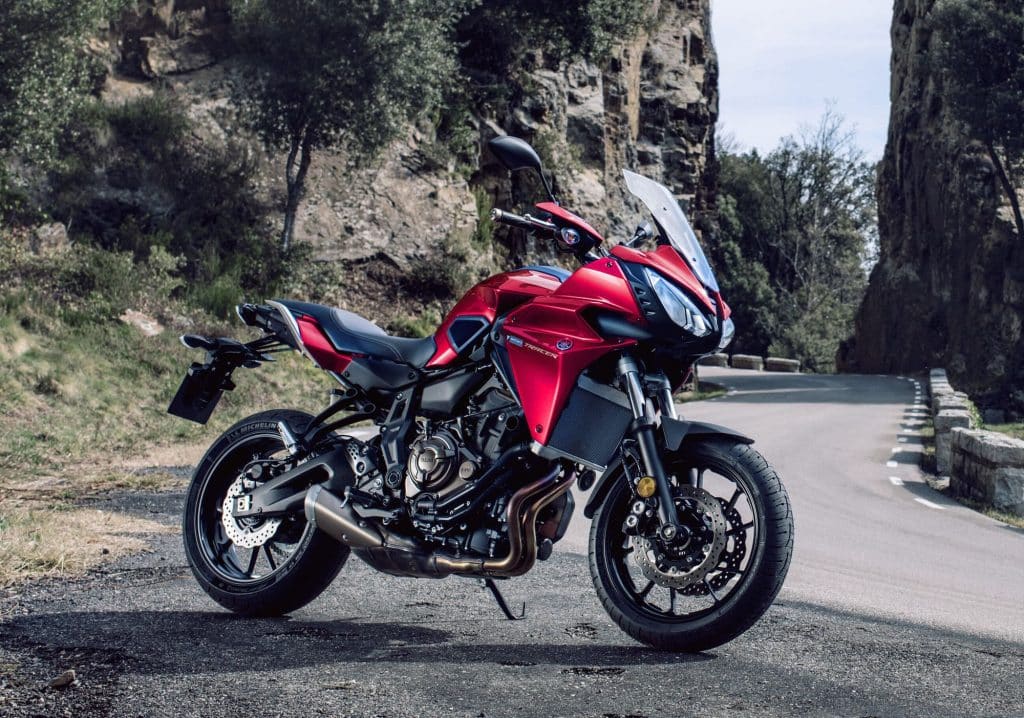
The Yamaha Tracer 700 is an extremely popular bike, one of the highest-selling motorcycles in Europe.
It’s popular because it’s economical, sporty, and practical. It looks decent and it even sounds great — especially when the exhaust is liberated a little…
The core of the Yamaha Tracer 700 is the same CP2 engine that we see in some of Yamaha’s other very popular motorcycles. The engine is a liquid-cooled 689cc parallel twin with four valves per cylinder and dual overhead cams. It’s rev-happy and fun to ride, with torque from down low but a decently high-reaching powerband.
The Yamaha Tracer 700’s engine makes 55 kW (74 bhp) of power at 9000 rpm. But more importantly, the torque curve of the Tracer 700’s engine is tremendous. It makes around 90% of its peak torque (of around 45 ft-lb / 60 Nm) between 2500 and 8000 rpm, which is exactly where people ride every day.
The Yamaha Tracer 700 is a street adventure bike. It has an upright riding position and some protection, but don’t mistake it for an off-roader. Like its bigger sibling the Yamaha Tracer 900, ground clearance is similar to that of other road bikes, and it doesn’t have underbelly protection stock.
If you’re looking for an adventure bike, then you’re probably interested in the Yamaha Ténéré 700.
The front brakes on the Yamaha Tracer 700 are twin 282 mm units with four-piston calipers, and ABS is standard. As you might expect on a budget bike, the front suspension is a non-adjustable conventional fork, and the rear shock is just adjustable for preload. Still, it’s exactly the setup many riders will need — nothing too complicated!
Maintaining the Yamaha Tracer 700 is painless. Mostly, it’ll just need oil changes every 10000 km, with an oil filter change every 20000 km. You also have to replace the coolant and brake fluid periodically, but that’s it. Every so often (every 40000 km) you have to do a valve inspection — but this is not as an expensive job as on bigger bikes, as it has a parallel twin motor with just one cylinder head.
From the 2021 model year, Yamaha updated the Tracer 700, re-releasing it as the Yamaha Tracer 7, parallel to the Yamaha Tracer 9.
References — Manual for the Yamaha Tracer 700 (2016-2020)
Below are screenshots of the maintenance schedule from the manual for the Yamaha Tracer 700.
You can also download it from Yamaha’s website here.

